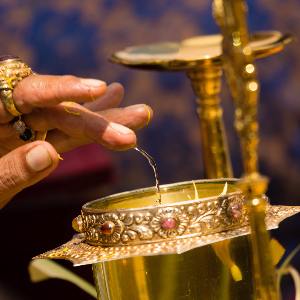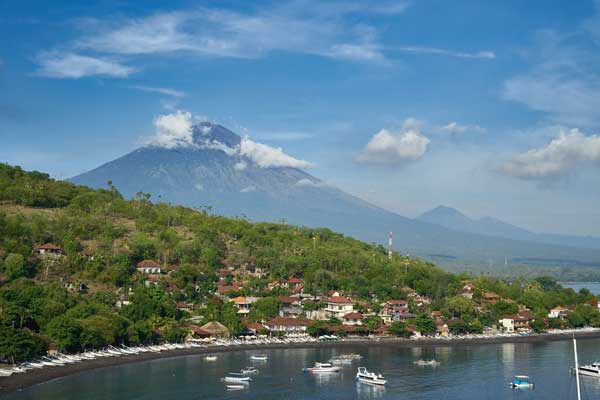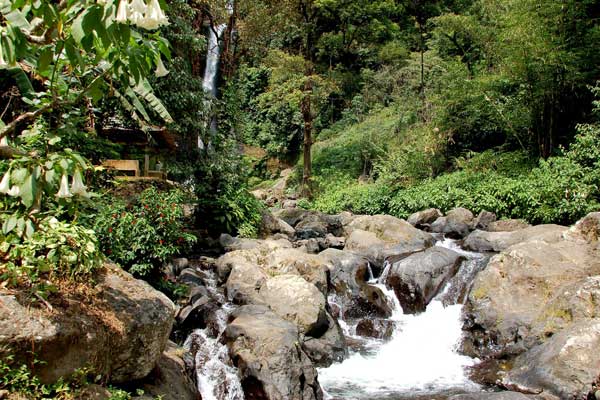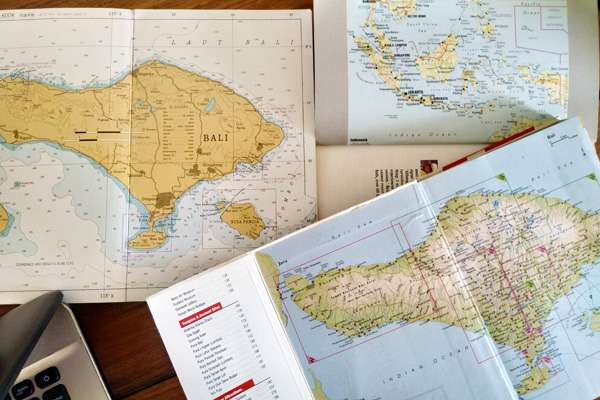No products in the cart.
Bali Weather & Seasons
The climate in Bali, Indonesia is tropical, characterized by high temperatures and high humidity throughout the year. Bali is located near the equator (nearly 8 degrees south) and has two distinct seasons: the dry season, which runs from April to October and the wet season, which runs from November to March.
The best time to visit would be during the dry season if you want to enjoy sunny and dry weather, but the island is a popular destination year-round and offer many activities to do even in the rainy season.
Best Time to Travel to Bali
When is the best time to visit Bali?
The best time to visit Bali depends mainly on 2 factors: the WEATHER (sunshine, rainfall, temperatures, sea conditions), and SCHOOL HOLIDAYS or public holidays (which has an impact on prices for accommodation, airfares & flight tickets, and whether Bali is crowded or not).
Travel during MID-Season – if you can
Book Online
- SIMcards & e-Sims online (NEW)
- Hotels & Resorts
- Private Villas & Rentals
- Trekking Tours & Sightseeing
- Car Rental with Driver (half-full day)
- Airport Transfer DPS
- International Driving License
- Bali Scooter & Bike Rental
- Cheap Flights to Bali
- Medical Travel Insurance (incl. Covid coverage)
- Golf Tee Time
Mid-Season: For many reasons, the very best time to come to Bali are the months of May, June & September – while April & October are still good
It’s just before or after high Season, still dry season, it’s slightly less humid, and room prices and villa rentals can be 30-50% cheaper than during high season. Many shops offer sales and promotions, restaurants are less crowded in those mid-season months, and in general, Bali is a bit more relaxed. October is not too bad either, still much less rain than November (usually – check the rainfall chart).
- Room prices for these months 30-50% off high season rates
- Weather is still dry and less humid
- Not too crowded, everything is more relaxed, traffic not too crazy in the tourist areas
- Sea conditions excellent
- Airfares still reasonable
- Sales & Promotions in Shops & Restaurants
When is High / Peak Season in Bali?
These are Bali’s busiest times: The months of July and August, Easter, Christmas & New Year, Chinese New Year.
Some visitors love it when it’s busy, when the streets are buzzing and could not imagine a holiday otherwise. If you like it quiet and more serene, then Kuta, Legian, Seminyak, and Canggu during high season might not be your first and best choice.
Dry and Rainy Season in Bali
Dry Season in Bali
April to October
Less Rain – Cooler Breezes
During the dry season, temperatures typically range between 80-90°F (27-32°C) and humidity is relatively low, while there is often a nice and cool breeze which is very pleasant. This is the most popular time for tourists to visit Bali, as the weather is sunny and dry with little chance of rain. Temperatures are pretty steady all year round but during dry season, the evenings can be pleasantly fresh with a cool breeze.
During Bali’s dry season, beaches are generally clean, and Bali shows its pretty side. One can still expect occasional rainfall. If you have a choice, then yes, better to avoid the traditionally rainy months to minimize the risk of bad weather and come to Bali during dry season.
It is in general the warmest time of the year, but the lower humidity makes it more comfortable than the rainy season. The skies are usually clear and sunny, making it ideal for outdoor activities such as swimming, sunbathing, water sports, trekking, and beach parties.
Rainy Season in Bali
November to March
More rain, hotter, much more quiet
During the rainy season, Bali experiences more rainfall and higher humidity than during the dry season. The temperatures during this time of the year are still warm, typically ranging from 75-85°F (24-29°C). The island receives most of its annual rainfall during this time, and it can be quite heavy at times, but usually, it does not rain all day, usually, there are short spells of rain that might last a couple of hours in the afternoon and during nights.
It’s still possible to enjoy many outdoor activities during this time of the year. The island’s lush tropical landscape is especially beautiful during the rainy season, with the vibrant green rice terraces and the jungle covered in mist. However, during rainy season Bali the beaches and sea in the south of Bali (Kuta, Legian, Seminyak, Canggu) can be quite dirty due to debris and trash washed onto the shore – during December, January and February particularly. That’s not a pretty sight!
The Cooler Highlands and Mountains of Bali
Central Bali, Volcanos and the Mountains
Bali’s central mountain area is typically cooler and get more rain than the lower coastal areas. Especially at night, temperatures can drop significantly in the highlands near the volcanoes.
The popular regions of UBUD, SIDEMEN and BATUKARU are situated at an altitude of around 600-900 meters (1,970-2,950 feet) above sea level. This altitude results in a cooler and more comfortable climate than the coastal areas of Bali, which can be quite hot and humid. The temperature in Ubud for example is typically around 75-85°F (24-29°C) throughout the year, which is cooler than the coast (Kuta, Legian, Seminyak, Canggu, Denpasar, Sanur, Bukit Peninsula, Pecatu, Uluwatu, Nusa Dua etc).
-
Mount Agung: This is the highest volcano on Bali, standing at 3,142 meters (10,308 feet) above sea level. It is an active volcano and has erupted several times in recent history, with the most recent major eruption occurring in 2017. The eruption caused widespread ashfall and forced the evacuation of thousands of people living in the surrounding areas. Mount Agung is also an important cultural and spiritual site for the Balinese, and it is believed to be the home of the gods.
- Mount Abang: The volcano is located in the central part of Bali, standing at 2,151 meters (7,057 feet) above sea level. It is an inactive volcano, and just like Mount Merbuk, it’s not considered a very popular tourist destination. The peak of the mountain can be reached by hiking in more or less 2.5 hours.
-
Mount Batur: This volcano is located in the northern part of Bali, standing at 1,717 meters (5,633 feet) above sea level. It is an active volcano that last erupted in 2000, and it is a popular destination for hikers and trekkers. The volcano is also known for its beautiful caldera lake, which is a popular spot for swimming and boating.
-
Mount Merbuk: This volcano is located in the northeastern part of Bali, standing at 1,142 meters (3,749 feet) above sea level. It is an inactive volcano and it’s not considered a popular tourist destination.
-
Mount Batukaru is a volcano located in the central part of Bali, Indonesia. It stands at 2,276 meters (7,470 feet) above sea level and it is considered an active volcano, however, it has not erupted in recorded history.
Mount Batukaru is a popular destination for trekking and hiking, as the trek to the summit offers beautiful views of the surrounding landscapes, including lush rainforests, rice terraces, and waterfalls. The summit of the volcano is also home to the Pura Luhur Batukaru temple, one of the most important temples in Bali, and it’s considered sacred by the local people.
The volcano is located in the Tabanan Regency of Bali and it’s surrounded by the Batukaru mountain range, which is also known as the “Garden of Bali”. The area around the mountain is a protected area and it’s home to a diverse range of flora and fauna, including many rare and endemic species.
Mount Batukaru is also known for its cool and misty climate, which is a pleasant contrast to the hot and humid weather on the coast. This makes it an ideal destination for those looking to escape the heat and enjoy the beautiful natural scenery of Bali.
As with any volcano climbing, it’s important to be prepared, have a proper equipment, and follow the guidance of a local guide, as the trek can be challenging at times, and the path may be slippery, especially during the rainy season.
- Mount Rinjani: This volcano is located on the neighboring island of Lombok, but it is visible from Bali on a clear day. It stands at 3,726 meters (12,224 feet) above sea level, making it the second highest volcano in Indonesia after Mount Kerinci. It is an active volcano that last erupted in 2010. Mount Rinjani is also a popular destination for hikers and trekkers.
All of the volcanoes in Bali and Lombok are considered sacred by the local people, and they are often the sites of religious ceremonies and offerings. They are also popular tourist destinations and offer beautiful views of the surrounding landscapes. Visitors should be aware that all of these volcanoes are active and that there may be restrictions on access during times of increased volcanic activity.
Bali Climate Facts
Climate Chart Bali
Have a look at the climate table, which should give you a good idea about temperatures during the day and the expected rainfall during dry season and rainy season. Check our area map to see if your holiday area is located at the coast, or in highlands near volcanoes, or somewhere else.

Rainfall in Bali
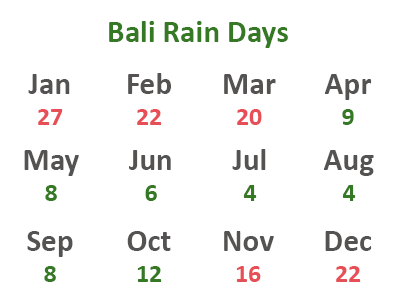

Monthly Weather Statistics for Bali
| General Weather Conditions in Bali per month | |||||||
|---|---|---|---|---|---|---|---|
| Months | max. Temp. | Rain days | Rainfall | Season | |||
| Bali weather January | 26°C | 78°F | 27 | 34.5 cm | Rainy Season | ||
| Bali weather February | 26°C | 78°F | 22 | 27.4 cm | Rainy Season | ||
| Bali weather March | 26.5°C | 79°F | 20 | 23.4 cm | Changing Season | ||
| Bali weather April | 27°C | 80°F | 9 | 8.8 cm | Dry season | ||
| Bali weather May | 28°C | 82°F | 8 | 9.3 cm | Dry season | ||
| Bali weather June | 26.5°C | 79°F | 6 | 5.3 cm | Dry season | ||
| Bali weather July | 26.5°C | 79°F | 4 | 5.5 cm | Dry season | ||
| Bali weather August | 26.5°C | 79°F | 4 | 2.5 cm | Dry season | ||
| Bali weather September | 26.5°C | 79°F | 8 | 4.7 cm | Dry season | ||
| Bali weather October | 27°C | 80°F | 12 | 6.3 cm | Changing Season | ||
| Bali weather November | 27°C | 80°F | 17 | 17.9 cm | Rainy Season | ||
| Bali weather December | 26.5°C | 79°F | 22 | 27.6 cm | Rainy Season | ||


 Indonesia
Indonesia Deutsch
Deutsch











